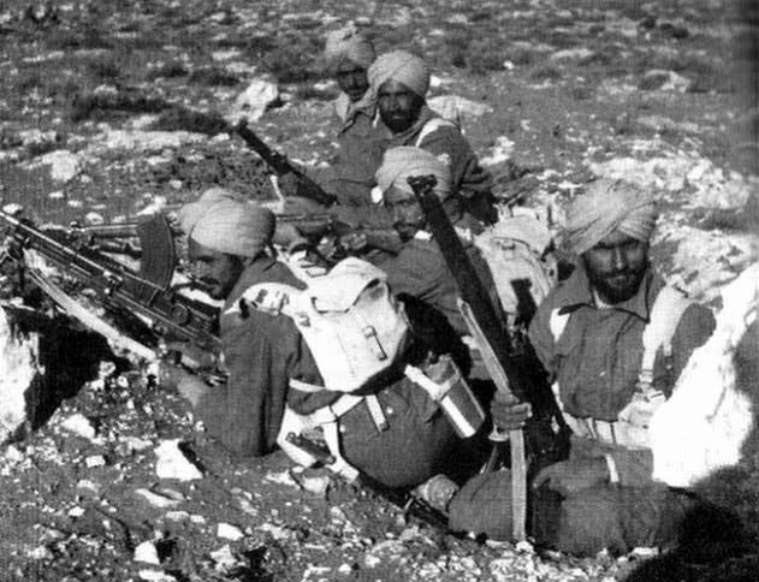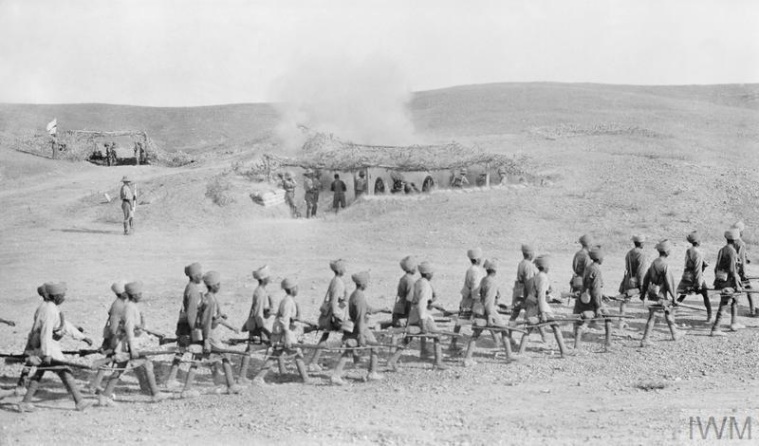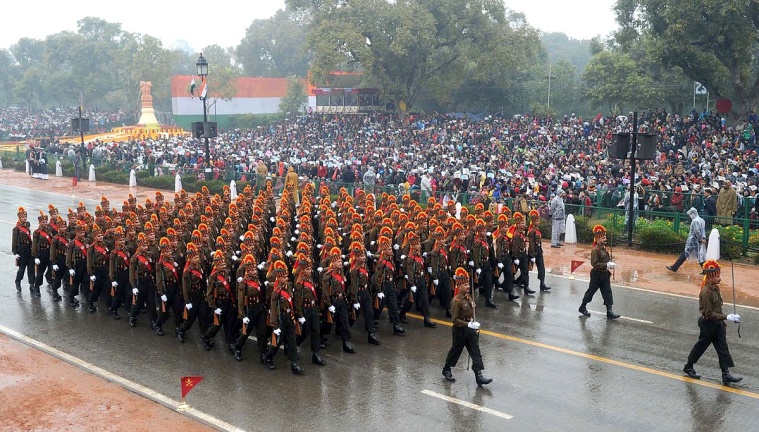On September 12, 1946, soon after taking oath as the minister of external affairs in India’s pre-Independence cabinet, Jawaharlal Nehru sent a letter to the commander-in-chief and defence secretary urging large-scale reforms in the Indian Army. In Nehru’s opinion, these reforms were necessary to safeguard the democracy that was about to be born. The need of the hour, argued Nehru, was to “transform the whole background of the Indian Army” and change its composition based on the martial classes recruited heavily from Punjab and a few other areas. Instead, the army needed to be opened up in ways that reflected the aspirations of the larger Indian nation.
The Congress party had been criticising the colonial policies of caste and community based recruitment in the Indian Army for years. The policy of ‘divide and rule’ had to be brought down now that they were in clear control of the country. Reforming the army in the delicate years following the Independence though was not easy. The continuing instability in several parts of the country, the war with Pakistan and the military action in Hyderabad made it imperative for the army to remain stable. Perhaps the biggest obstacle came from the senior officer corps who believed mixed class recruitment might make it difficult to control discipline in the army.

In the years that followed, although some mixed class regiments were formed, the infantry remained largely caste and community based. As of now, there are 26 class based regiments in the Indian Army. The recently announced Agnipath scheme of the Indian government is expected to transform the class based recruitment of the army and open them up on an “all India, all class” basis. Although the nature and extent of the reform are yet to be decided, if it goes through it would be a historic moment for the army. While on one hand, caste and community based recruitments are seen to be divisive in nature, experts and senior officials in the army note the historic context in which the system arose and say that altering it might affect the feeling of brotherhood that is necessary for the military to perform well in war.
Colonial policy
When the British first came to India, they realised they did not have adequate white manpower for consolidating their rule in a foreign land. This was because of two reasons. First, European forces would be more costly and second, the Indian climate was too harsh for the white soldiers and most of them would want to leave too soon. Recruiting Indians in that sense was preferable since they were more acclimated to the geographical and social landscape and were more easily available.
Why were Indians willing to fight in the British Army is a question that scholars have been trying to understand for years now. Military historian Kaushik Roy in his article, The construction of regiments in the Indian army: 1859-1913 (2001), suggests that it was “managerial expertise that was the chief factor in enabling the British to structure a combat-effective and loyal army from the subcontinent’s manpower.” The regimental structure of the army, which was a product of the military revolution in the West, was key to the success of the British in incorporating Indian soldiers.
Since nationalism could not be utilised in the construction of regimental pride, the British officers motivated the sepoys of the Bengal Army before 1857 by pandering to notions of caste. The Brahmins and Rajputs were particularly preferred and to please them, the lower castes were not enlisted. Roy in his work writes that by 1852, 70 per cent of the Bengal Army consisted of Purbiyas or the high castes of north India. Things changed, however, after the rebellion of 1857 in which the Purbiya units of the Bengal Army played a major role.
 Sikh regiment during the Second World War. (Wikimedia Commons)
Sikh regiment during the Second World War. (Wikimedia Commons)
By the latter half of the 19th century studies on eugenics had taken off in Europe. British officers in India realised that race and not caste must be the basis on which characteristics of communities ought to be determined. Thereafter, the Martial Race theory is what shaped recruitment policy in the Indian Army. It was premised on the fact that only select communities within the subcontinent, due to their biological and cultural superiority, were capable of bearing arms.
Story continues below this ad
Lord Roberts, who was the commander-in-chief of the Indian Army between 1885 and 1893 argued that the fighting races of India were the Sikhs, Dogras, Gurkhas, Rajputs and Pathans. “The wheat-eating small peasants and communities inhabiting the cold frontier regions were considered martial,” writes Roy in a 2013 article in the peer-reviewed journal Modern Asian Studies. The Gurkhas and Sikhs had also fought the British in the Anglo-Nepalese War of 1814 and the Anglo-Sikh wars and so the British were aware of their military strength and were interested in recruiting them.
In an interview with indianexpress.com, Roy explained that even though this policy of recruitment rested on the European theory of Martial Races, it also had indigenous roots. “For instance, in the Mughal army there were never any Bengalis or people from Madras. There was a tradition of soldiering being confined to certain groups and that tradition was further strengthened under British rule,” he says.
“The British also wanted to make it much harder for troops within each Indian regiment to coordinate against them as they had done in 1857,” writes political scientist Steven Wilkinson in his book Army and Nation: The Military and Indian Democracy since Independence (2015). “The central idea here, again, was expressed by Sir Charles Wood, the Secretary of State for India, in a letter in May 1862: ‘If one regiment mutinies, I should like to have the next so alien that it would fire into it’.”
It is important to note that in the British understanding, class regiments did not consist of a single caste category, but a combination of different caste groups. For instance, the Dogras consisted of several different castes from Jammu, Punjab and Himachal Pradesh, Gorkhas included a number of different groups from East and West Nepal, and Kumaonis referred to multiple hill castes in the Uttarakhand region.
Story continues below this ad
Roy in his book notes the British policy of shaping the identities of the Gorkhas, Rajputs and Sikhs — the three groups with the largest presence in the Indian Army after 1859. In case of the Rajput regiments, for instance, the British encouraged the practise of Hinduism against all other forms of local and tribal religious practises such as serpent worship. “The Rajputs were reminded, that even in the darkest hour, they fought bravely against the Muslim invaders of North India,” he writes. Similarly, Sikhism was strengthened among the Sikh regiments on the grounds that it was a religion based on martial ethos.
 A platoon of the 1/2 Rajputs (51 Brigade, 17th Division) passing a heavy artillery battery in action at Samarra. (Wikimedia Commons)
A platoon of the 1/2 Rajputs (51 Brigade, 17th Division) passing a heavy artillery battery in action at Samarra. (Wikimedia Commons)
Further, different regiments were allowed and encouraged to possess different uniforms to maintain a distinct identity and heighten each unit’s prestige. The 1st Punjab Cavalry, for instance, had a dark blue uniform with blue and scarlet pagris (turban). Their badges had ‘Delhi’ and ‘Lucknow’ inscribed on them as a reminder of their loyal behaviour during the revolt of 1857.
An Army for an Independent India
The reliance of the army on just a few regions and communities first emerged as a matter of concern during the First World War when there was increased demand for troops. Even though the British decided to recruit more broadly during this period, those employed from non-martial areas were involved mostly in support roles rather than as frontline combatants. Once the war ended in 1918, the regiments recruited from outside the favoured groups — such as the Bengal detachment that had served in Mesopotamia — were quickly dissolved on grounds that they had not performed well.
But as Independence came closer, the highly imbalanced nature of the colonial army was increasingly understood as unsuitable for a democratic country. The most common argument was the unfairness of a system in which several communities and regions had to pay taxes for the upkeep of an army from which they were excluded. There was also the fear that if the army was dependent on just a few communities then those groups would have a larger say in national politics. “Finally, there was also the worry that army recruitment policies were preventing the development of a broader national identity that could transcend caste, class, region and religion,” writes Wilkinson.
Story continues below this ad
Between 1935 and 1938 three motions were passed in the Council of State requesting a total reform in the martial race recruitment policy, all of which were rejected. They failed mainly because of the resistance of the British who realised that their control over India rested upon an army drawn from groups that had been ‘loyal’ to them in the past.
Things changed after 1947 when a large number of British regiments in the Indian Army left and most of the Muslim regiments were transferred to Pakistan, which meant that substantial adjustments had to be made. However, while the political instability within India and its territorial disputes with neighbouring regions was a big hurdle in reforming the system, the restructuring of the army was made all the more difficult because for most politicians including Nehru, the immediate aim after Independence was to cut down expenditure on the army.
 The Jammu & Kashmir Rifles contingents passes through the Rajpath during the 66th Republic Day Parade 2015, in New Delhi on January 26, 2015. (Ministry of Defence)
The Jammu & Kashmir Rifles contingents passes through the Rajpath during the 66th Republic Day Parade 2015, in New Delhi on January 26, 2015. (Ministry of Defence)
The biggest opposition to reform though, came from the senior officers of the army, especially at a time when there was a possibility of India going to war with Pakistan soon. The first commander-in-chief General K M Cariappa’s views are a good representation of the senior leadership’s commitment towards the class regimental system. “Far from opposing the class regiment policy, as a Brigadier and the only Indian officer to serve on the 1944-45 Indian Army Reorganisation Committee, he pressed instead for the conversion of the five proposed post-1945 mixed regiments to single-class regiments in order to increase their military effectiveness,” writes Wilkinson. Cariappa’s support for single-class regiments was based on “factors of inter-class feeling and of reinforcement difficulties during war.”
Similar views were shared by other senior officers as well. General K S Thimayya, who was the Chief of Army Staff between 1957 to 1961 is known to have suggested that “soldiers perform better when their units are not mixed…This has been proved. Also, the officers of a ‘pure’ battalion are apt to be more careful about expending their men, and this always improves morale.”
Story continues below this ad
Wilkinson explains that it is not as if these officers adopted all aspects of the martial class prejudices of the British. “Cariappa for instance, had opposed the senior British officers’ denigration of some ‘non-martial’ groups’ military qualities when on the army reorganisation committee in 1944-45,” he writes. “But these officers did share the view that long regimental traditions and the attachment of particular groups to the regiment paid dividends in terms of fighting effectiveness.”
Debates around the fixed class composition of regiments have come up on several occasions in the years following Independence. “This issue was raised in the Parliament in 2000 and 2016. In 2016, the Defence Minister Manohar Parikkar had said that the existing regiments of the Indian Army are constituted on the basis of enhancing cohesion and warfighting potential and have stood the test of time in an exemplary manner. Hence there is no requirement to break the cohesion of battalions or raise additional class based regiments,” says former Northern Army Commander, Lieutenant General B S Jaswal.
In the 1980s an experiment was carried out to mix battalions of fixed class regiments. “For instance, from the JAK RIF to which I belonged, troops were sent to the Assam Regiment and we got companies from the Marathas and the Garhwals,” narrates Jaswal, adding that the experiment failed miserably and the battalions were reverted immediately afterwards.
The reason for the failure of the experiment, explains Jaswal, was that they did not have the kind of cohesion that is required for frontline duties. “The Assam regiment, for instance, has a completely different food and language culture from that of a regiment consisting of Punjabis,” he says.
Story continues below this ad
Lt General J S Cheema, as Deputy Chief of Army Staff from the Sikh regiment explains that the bulk of the Indian army comprises of men from the villages. “For them the affinity that is a product of being from the same region or having the same language, religion and culture becomes a strong motivating factor.”
The sense of camaraderie of brotherhood formed in the battalions is known to play a big role in looking out for each other when in combat. Jaswal recalls an incident that took place during the 1965 Indo-Pak war. “There were these two soldiers from a village in Himachal who virtually ate from the same plate. In the course of the war, one of them was hit and left behind in a brook. The other one ran back from where he was to pick him up and bring him back immediately,” he narrates. “The reason was it would be impossible for him to face his village kinsmen if he left behind his friend. He would be ostracised.”
A similar example of bonhomie is cited from the Battle of Rezang La during the 1962 Sino-Indian War. In this historic battle, the Ahirs from Haryana fighting in the 13 Kumaon Regiment are known to have valiantly fought back repeated attacks from the Chinese. “They were practically all from the same village, related to each other. Brothers, fathers and sons, fought together in the same trench,” says Jaswal. He adds, “Courage increases exponentially when those fighting belong to the same region.”
Further reading:
Kaushik Roy, Race and Recruitment in the Indian Army: 1880-1918, Modern Asian Studies, 2013
Story continues below this ad
Kaushik Roy, The Construction of Regiments in the Indian Army, War in History, 2001
Steven Wilkinson, Army and Nation: The Military and Indian Democracy Since Independence, Harvard University Press, 2015



 Sikh regiment during the Second World War. (Wikimedia Commons)
Sikh regiment during the Second World War. (Wikimedia Commons) A platoon of the 1/2 Rajputs (51 Brigade, 17th Division) passing a heavy artillery battery in action at Samarra. (Wikimedia Commons)
A platoon of the 1/2 Rajputs (51 Brigade, 17th Division) passing a heavy artillery battery in action at Samarra. (Wikimedia Commons) The Jammu & Kashmir Rifles contingents passes through the Rajpath during the 66th Republic Day Parade 2015, in New Delhi on January 26, 2015. (Ministry of Defence)
The Jammu & Kashmir Rifles contingents passes through the Rajpath during the 66th Republic Day Parade 2015, in New Delhi on January 26, 2015. (Ministry of Defence)




























